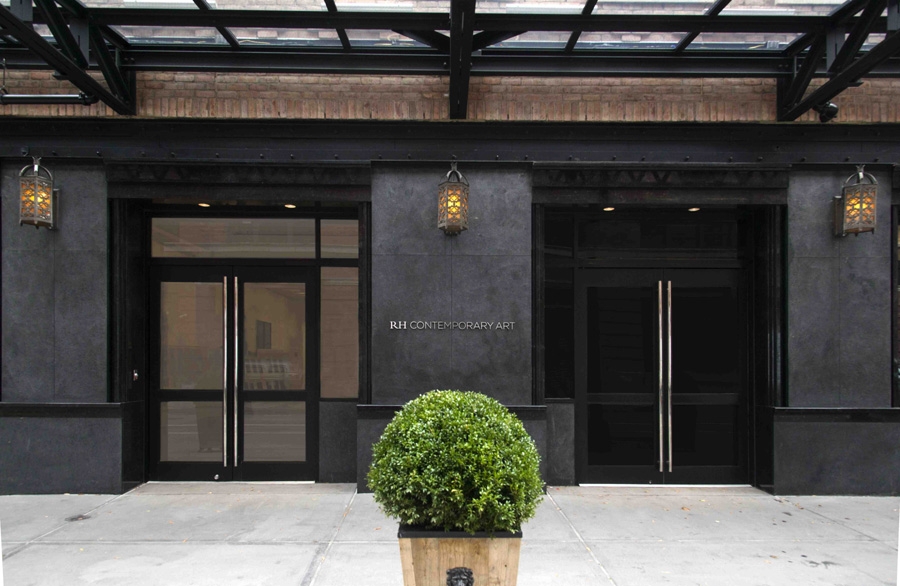The first thing you notice about the artists involved with RH Contemporary Art, the multi-platform art project that includes an online marketplace, a 28,000-square-foot exhibition space in the Chelsea district of New York, a quarterly art journal and a residency program in Brooklyn, is that they are all ridiculously attractive. So much so that after seeing a few flawlessly produced documentary-style biopics on each, I turned to the PR representative involved with the project and asked, “Are the artists good looking as a general rule?” To which she replied, “Well, one of our male artist’s ears kind of stick out…” Which isn’t much of a condemnation given what the average person on the street looks like.
‘Ridiculously attractive’ might in fact be the best way to describe the whole operation, which is a branch of Restoration Hardware, the luxury brand best known for its heritage-chic home furnishings line. Advertised to the masses in the form of a thick catalogue, which features aspirational room settings, the brand has recently branched out to both the contemporary art and music industries, by launching gorgeously executed platforms that focus on bolstering the careers of emerging and mid-career musicians and artists.
potential collectors are invited to consult an ‘art specialist’ before laying down their credit cards for a work they’ve likely never seen in real life
To do so, RH Contemporary Art (RH Music is a similar, but disparate entity) has copied many of the sales features of the contemporary art world — the online marketplaces exemplified by sites like Artsy, Paddle8 and Artspace, and the massive white cube exhibition spaces of mega-galleries such as David Zwirner and Hauser & Wirth — and thrown the weight of the company’s wealth behind it.
The result is a user-friendly, high-tech platform devoted to transparency. The latest exhibition, Outside the Lines: New Art from China, 31January through 12 April 2014, features the work of 12 Chinese artists. On the website, prices for the available works, which lean heavily towards photography and painting, are listed for all to see; potential collectors are invited to consult an ‘art specialist’ before laying down their credit cards for a work they’ve likely never seen in real life.
The perfect model for the type of collector who might be drawn to such an experience could be the San Francisco-based Co-Chief Executive Officer of Restoration Hardware himself, Gary Friedman. In 2012, at the behest of Holly Baxter, the Vice-President of RH Contemporary Art, he purchased one of six editions of Rain Room, Random International’s immersive environment, which drew massive crowds at both the Barbican in London, and MoMA in New York. Friedman was at first hesitant to lend his copy to the latter institution because, as he told The New York Times T Magazine, he didn’t understand the ‘significance of the ask.’ A self-proclaimed art novice, he had planned on introducing Rain Room in an RH-specific environment — currently, the installation is represented by a documentary shown in a screening room in the basement of the Chelsea gallery.
It may be easy to lob criticism at RH Contemporary. Wittingly or not, by association, a home furnishings brand selling contemporary art could be accused of reducing the medium to the realm of the decorative, especially when the work of many of the artists involved so far tends towards process-based, abstract compositions, that are unlikely to challenge. But in another sense, one can’t help but cheer for an operation, which, in an artworld entwined with the commercial markets, has found an appropriate niche.
As galleries corporatise, and profit from it, it only seems natural that corporations themselves will want part of the art action — and, in doing so, perhaps might highlight how much of what exists as ‘high art’ these days can be sold in the same manner as salvaged wood trestle tables, vintage bird cage chandeliers and 55-gram cashmere throws, all of which are available on the RH parent site.
30 January 2014
